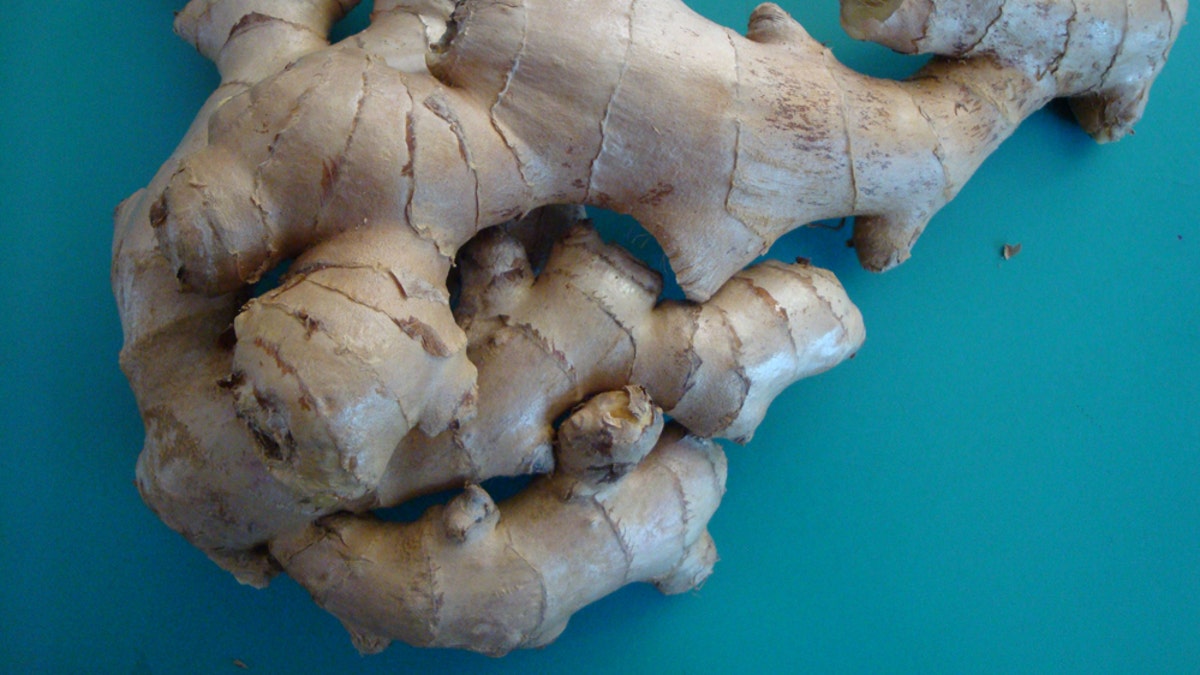
One of the influences of Latino cookery is the greatly increased interest in more spicy foods.
Nature provides a wide range of seasonings and spices, including some that pack a bite. Ginger Zingiber officinale is one of the most widely used and beloved of medicinal spices. Used since ancient times, ginger is insinuated deeply into the cookery of cultures around the world, from China to India to Jamaica to the Solomon Islands. Native to Southeast Asia and cultivated in virtually all tropical regions, ginger is a perennial herb with a branched rhizome. It is the rhizome, also referred to as the root, which is used for both culinary and medicinal purposes. The root is pungent, aromatic, and yellow to brown in color.
Ginger’s chemical soul
Ginger root contains essential oil and an oleoresin. It also contains numerous compounds including a variety of hydrocarbons, aldehydes and alcohols. Ginger contains at least a dozen antioxidants, plus a protein-digesting enzyme called zingibain, which appears to relieve arthritis pain by reducing inflammation. In experiments, the anti-inflammatory activity of ginger compared favorably with aspirin.
Ginger is rich in two groups of compounds known as the shaogals and gingerols. These compounds are powerfully antioxidant, thus helping to prevent cells from premature destruction due to exposure to environmental toxins and by-products of metabolism. Even more, these compounds are potent anti-inflammatory agents, and are proven to relieve inflammation throughout the body. Given that oxidation and inflammation are part and parcel of all chronic degenerative diseases, ginger can play a key role in disease risk reduction.
Traditional and modern uses
Centuries of people use ginger’s as a digestive, and the pungent root compares favorably with all known medications for motion sickness. Additionally, ginger helps to prevent seasickness more effectively than medicines for this condition. Its pungent flavor and aroma soothe a sore throat and help to relieve sinus congestion, especially when the root is pounded fresh and drunk as a tea. But the cold-fighting properties of ginger are more than aromatic.
The root contains at least a dozen virus fighters, including certain sesquiterpenes which fight rhinoviruses, the most common family of cold viruses. Ginger also inhibits platelet aggregation in blood vessels, thus helping to reduce the risk of atherosclerosis, hardening of the arteries. The compound gingerol shows promise in the fight against the fatiguing Epstein-Barr virus.
In folk medicine, ginger has been employed to relieve dyspepsia, flatulence, colic, vomiting and diarrhea. Preparations of the root have been used to stimulate appetite, and to relieve migraine headache and rheumatic and muscular disorders.
How to benefit from ginger root
To make ginger tea: Pound or finely grate a piece of ginger root the size of an adult thumb, and place it in a tea infuser in a cup. Pour a cup of freshly boiled water, let steep for five minutes, strain and drink. Add honey if you like.
Ready made tea: I like the Traditional Medicinals Organic Ginger in tea bags. It’s easy and convenient.
Chews: At any Asian grocery, pick up a bag of Ting Tings, which are a soft candy made in Indonesia, loaded with pungent ginger, especially good for the throat and motion sickness. Or look for Ginger Chews in any health food store.
And for an upset stomach, try real ginger ale, any natural brand that lists pure ginger on the label. Reed’s Ginger Beer will quell an upset stomach quickly.
Hippocrates said “Let food be thy medicine.” The simple food spice ginger, revered around the world, is also potent medicine indeed.
Chris Kilham is a medicine hunter who researches natural remedies all over the world, from the Amazon to Siberia. He teaches ethnobotany at the University of Massachusetts Amherst, where he is Explorer In Residence. Chris advises herbal, cosmetic and pharmaceutical companies and is a regular guest on radio and TV programs worldwide. His field research is largely sponsored by Naturex of Avignon, France. Read more at www.MedicineHunter.com
Follow us on twitter.com/foxnewslatino
Like us at facebook.com/foxnewslatino
